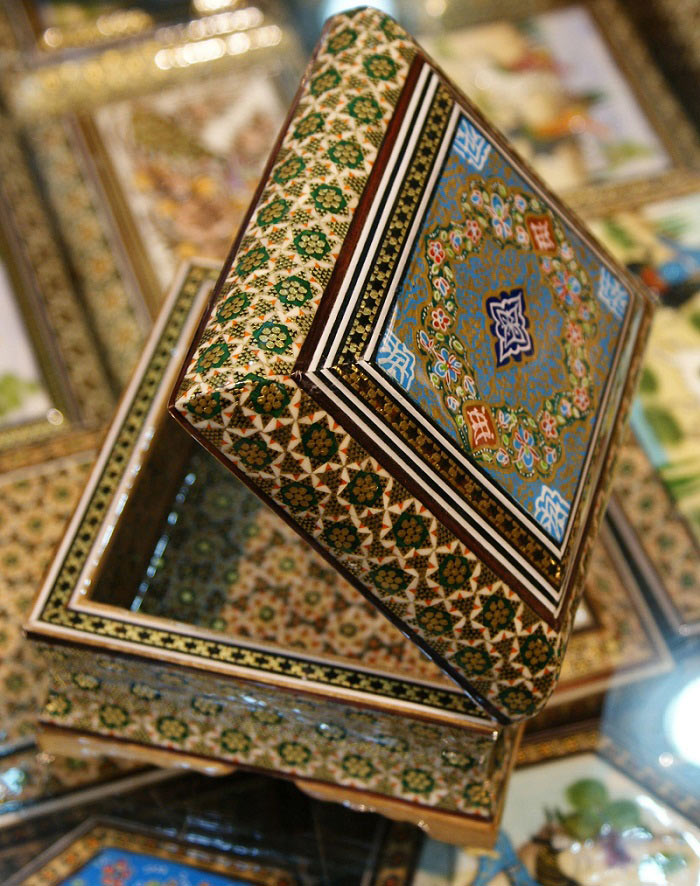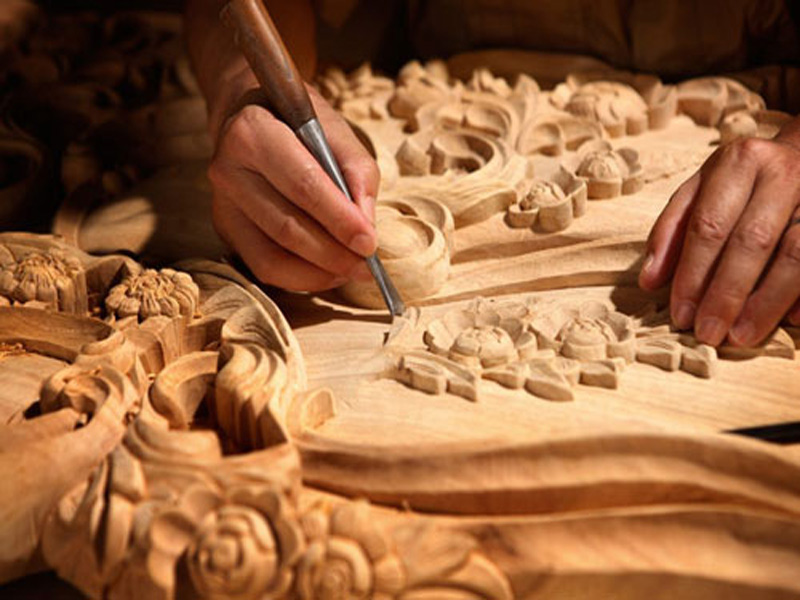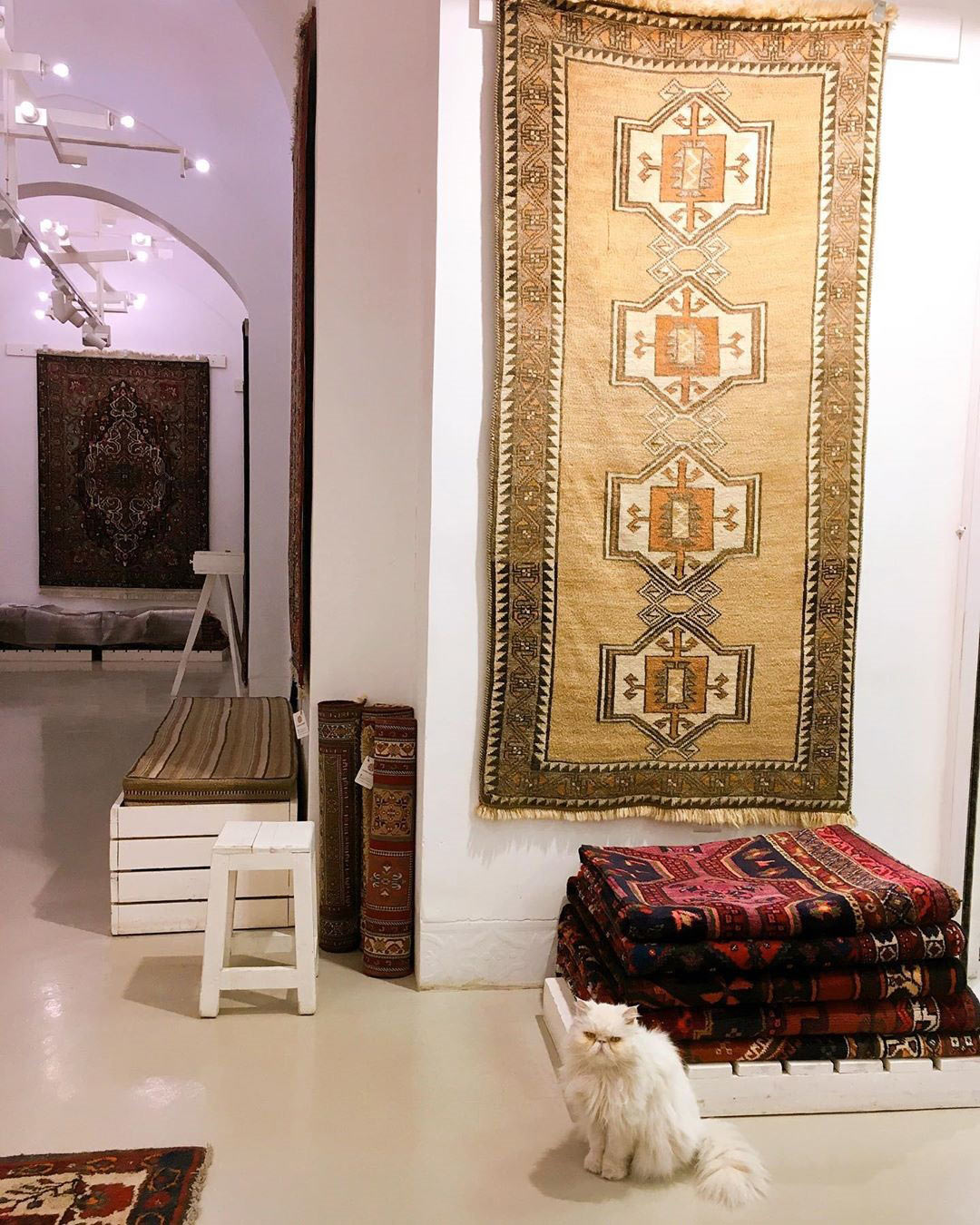Shiraz recognized as a world city of handicrafts
Shiraz from Fars province as the world city of handicrafts.
Celebrated as the heartland of Persian culture for over 2000 years, the southern city of Shiraz was one of the most important cities in the medieval Islamic world and was the Iranian capital during the Zand dynasty (1751–1794).
Last December, WCC-APR Director Ghada Hijavi along with fellow experts visited various handicraft workshops, stores, exhibits as well as craftspeople to follow up on their assessments.
Iran’s handicrafts exports reached $289 million in 2018, showing three percent growth year on year, based on data released by the Ministry of Cultural Heritage, Tourism, and Handicrafts.
Traditional ceramics, pottery vessels, handwoven cloths as well as personal ornamentations with precious and semi-precious gemstones are among Iranian exports to Iraq, Afghanistan and Germany, the US, the UK, and other countries.
Many Iranian cities have been registered in the World Crafts Council’s list previously: Tabriz for carpet, Isfahan for creative handicrafts, Mashhad for gemstones, Lalejin in Hamadan province for pottery, Marivan in Kurdistan province for Kalash-bafi (Giveh), Sirjan in Kerman province for Kilim weaving, Abadeh in Fars province for woodcarving, Maybod in Yazd province for Zilu carpet weaving, Khorashad village in South Khorasan province for Tobafi fabric weaving, and Kalpouregan in Sistan and Baluchestan province for its 7000-year-old pottery.
Because of these reasons we recommend you to come and visit Iran, this ancient and fantastic country .
Here we want to show you some of the most important handcrafts os Shiraz
Handicrafts
Shiraz is one of the most important cities in Iran in the field of handicraft production. The artists of this city, with great talent, create the most engaging works of art as Shiraz souvenirs. Of course, many of these Iranian souvenirs and handicrafts are not specific to Shiraz.
Khatam
Khatam Kari is one of the finest and most beautiful Iranian handicrafts that is also is considered as Shiraz souvenirs. This valuable art is made up of putting together regular, delicate wood pieces in different colors and shapes. Khatamkari is one of the Persian marquetry arts in which the surface of the wooden or metal items is decorated with pieces of wood, bone, and metal cut in a variety of shapes and designs. The materials used in this art can be of gold, silver, brass, aluminum and twisted wire. Several types of embedded articles and their quality are known for size and geometric designs. The smaller pieces result in a higher value of the work of art. This boat consists of the production of patterns of incrustations (usually in the form of a star), with fine wooden sticks (ebony, teak, ziziphus, orange, pink), brass (for gold parts) and camel bones (white parts) . Ivory, gold or silver can also be used for collection objects. These sticks are assembled into triangular beams, assembled and glued in a strict order to create a geometric pattern such as a six-branched star included in a hexagon. Sometimes cylinders are cut into shorter cylinders and then compressed and dried between two wood plates, before being cut for the last time, in 1 mm wide sections. These sections are ready to be plated and glued on the object to decorate, before finishing the lacquer. The stretch can also be smoothed through heating to wrap objects. Many objects can be decorated in this way, including jewelry boxes, chess boards, pipes, desks, frames or musical instruments
Design and use
Design marquetry is very elaborate. In each cubic centimeter of space, up to approximately 250 pieces of metal, bone, ivory and wood are placed side by side. This art, to a certain extent, has existed in Iran for a long time. The ornamentation of the doors of the sacred places consists mainly of embedded motifs. These specimens can be observed in the cities of Mashhad, Qom, Shiraz and Rey. In the Safavid era, the art of marquetry flourished in the cities of southern Iran, especially in Isfahan, Shiraz and Kerman. An embossed desk, one of the definitive masterpieces of this art, was awarded the first prize and a gold medal at an art exhibition in Brussels recently. This desk is now preserved in the National Museum of Washington. Also, in some real buildings, doors and various items have been inlaid. The ornate inlaid rooms at Sa 'd Abad and the Marble Palace in Tehran are among the masterpieces of this art. In the Safavid era, khatamkari was so popular in court that the princes learned this technique along with the art of music or painting. In the eighteenth and nineteenth centuries, the khatamkari declined, before being stimulated under the reign of Reza Shah, with the creation of art schools in Tehran, Isfahan and Shiraz . Incorporating techniques from China and improving with Persian knowledge, this art existed for over 700 years and is still practiced in Shiraz and Isfahan.

Glassblowing
Traditional glassblowing is still popular in many parts of the world. Skilled artists make glass from the combination of alkali-silica and melting it in the furnace, forming melted material by hand, by molding or by blowing it in it. This is a long-standing handicraft in Iran, and you can see glass works from ancient times in museums or buy the new ones as Shiraz souvenirs

Felt Alabaster
Making Felt Alabaster is one of the toughest work that Shiraz artists make it. Felt is made of camel, goat or sheep hair and is prepared after a hard process. It is very time-consuming to make felts because these substrates do not have a warp and they are made of wool. These Shiraz souvenirs are one of the priceless works of art that you can buy

Wood carving or Monabat Kari
Woodcarving is one of the most beautiful handicrafts on the wood. In fact, engraving is the art of carving on wood. Wood Carving is one of the most delicate Iranian handicrafts that is a combination of art and the pleasure of artists who create inexpensive and simple materials with valuable products, Artists who engage with a few pens and metal hammer on the wood, engraving their minds with Kofi lines, Slavic motifs, Khatayi, flowers, and chicken
History
According to the existing artwork in Iran, the history of this industry reaches 1500 years ago. Ancient Persians, as well as in the art of painting and carving ahead of other tribes, have gradually become familiar with the artistic techniques and artistic features of this field.The Persians were well known for their artistic tastes and master craftsmanship with the art of Monabat kari starting at very modest shapes and styles but slowly changing into a delightful form of art. Today Monabat Kari comes in some very complex designs and shapes that excite the viewers and show how this traditional and ancient form of Persian art has evolved
How it's done
Iranian woodcarving is created step by step and the first and maybe most important one is choosing the right piece of wood. The most used wood for Monabat kari is taken from walnut trees which are solid foundation for any chiseling required on them. Choosing a design and the approach for starting it is also key to creating the best possible form of this art. Alongside the delicate hammering, sandpapering and removing rough edges in the piece is also essential. Tourists in Iran purchasing Monabat Kari should make sure their purchase has the least amount of roughness. The final stages of Monabat Kari require specially treating the wood with various paints and oils to keep the wood away from moisture.The Iranian Monabat kari is one of the best Persian handicrafts showcasing the artistic taste of the Iranians and makes a wonderful piece of art to decorate any tourists home. Shiraz is one of the best places to purchase Monabat Kari and is a very popular art in that city

Persian Carpets
Persian carpet or rug is definitely on top of the list when it comes to buying souvenirs in Iran. While variety of designs and colors of Persian Rugs are endless and they come in different price ranges, there are also other handmade textiles and throw rugs that are noteworthy and many tourists prefer to buy them for their diverse choices. They are called Qali or Farsh in Persian language; the hand woven precious works of art which are different in design, material, craftsmanship and price in each province of Iran. It would be a good idea to study a little bit about types of Persian rug before coming to Iran or at least try to familiarize yourself with different rugs while you are in the capital Tehran where you have the opportunity to compare the diversity of patterns. This search will extend your enjoyment of visiting the royal palaces in Tehran, since you would pay attention to some rare and elegant rugs dedicated to the Kings. Also, you can visit the Carpet Museum of Iran in central Tehran which has an exquisite collection of antique rugs of the country

The most elaborate and therefore most expensive rugs are the silk rugs (Qali Abrisham), with very delicate knots and much lighter weight than other rugs in the same size. Woolen rugs are normally cheaper, but heavier than the silk rugs and come in numerous designs and colors. Although this is not a certain rule, but usually rugs from Tabriz , Shiraz and Qom are among the most expensive rugs, while you can also find astonishing Kashan, Yazd, Kerman or Naeen rugs in different price range
Nomadic carpets (Farsh-e Ashayeri), such as Qashqai, Bakhtiari, Turkmen and Balouch are among the least expensive ones, for their larger knots and designs they have learnt by heart
.jpg)